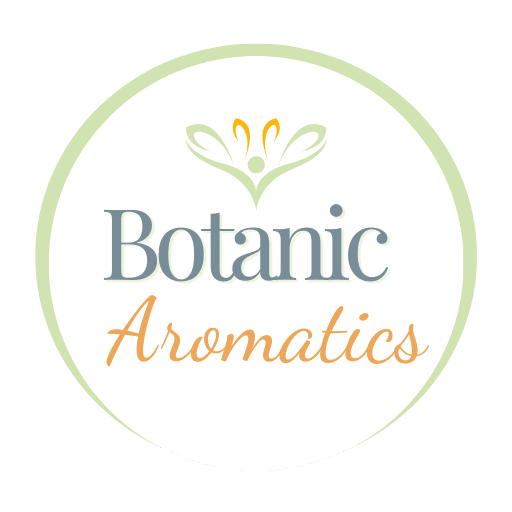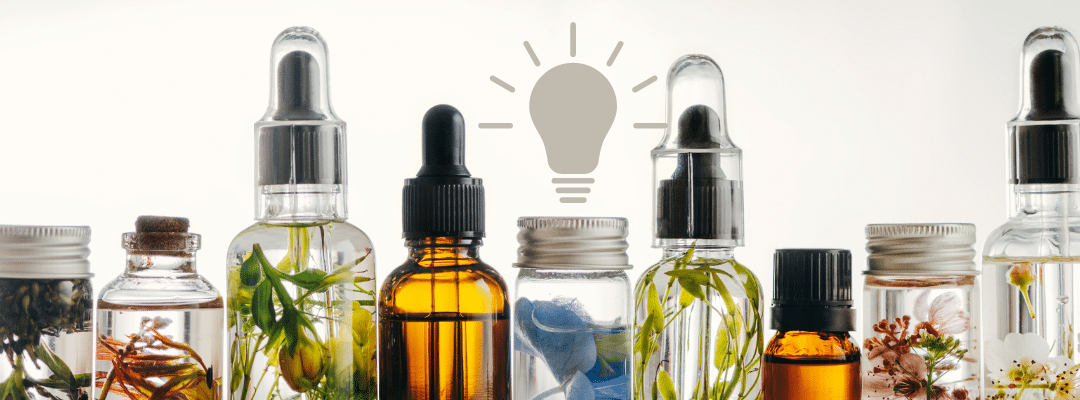Hey there!
Welcome to our blog series dedicated to the artful science of aromatherapy and essential oils. Art and science, you ask. Yes, there is the art, the intuitive, creative aspect of using essential oils, and the science rooted in organic chemistry. At their essence, essential oils are volatile (meaning they evaporate quickly) compounds (having many chemicals.)
Whether you’re a complete newbie or a seasoned pro, we’re here to share some wonderful insights into these incredible oils. Our series is full of fun and engaging content that will guide you through all the ins and outs of essential oils to help you gain knowledge and confidence. The subject matter is broken down into digestible bite-sized pieces. So, if you need to explore the material on dilution, you won’t have to wade through a bunch of information to get what you need. We will explore some of the chemistry that you might want to consider, the extraction methods (this matters), and other topics that will aid you. Our goal is to help you have the assurance you need so that you can use essential oils in your health and wellness pursuits. They are powerful allies in your health and wellness toolbox.
So, get ready to learn and have fun with us as we explore the fascinating world of essential oils together!
What Are Essential Oils?
Plants, trees, and shrubs contain oils, which are extracted. These form a concentrated substance we call essential oils. The oils acquire the plant’s essence, aroma, and therapeutic properties through various methods of extraction, though the most common is distillation or cold pressing. Each essential oil contains a complex mixture of chemical constituents, which gives it unique characteristics, aromas, and health benefits.
A single oil may contain 50 to 100 chemicals or more that act synergistically to provide benefits that are more powerful than either alone. Lavender (Lavandula angustifolia), for example, contains both linalool and linalyl acetate. These two chemicals have complementary effects on the nervous system. Linalool is a terpene alcohol with sedative, anti-inflammatory, and analgesic properties. Linalyl acetate is an ester with relaxing, antispasmodic, and anti-anxiety properties. These two chemicals working together contribute to Lavender’s therapeutic benefit.
Many parts of the plants, trees, and shrubs are used, including flowers, stems, roots, bark, seeds, and peels. These are used in varying quantities to extract essential oils. For example, to make 1 ounce of rose essential oil requires 625 pounds of rose petals, while sweet orange takes ~75 pounds of peel. Rosemary is extracted from the leaves and flowers of the Rosmarinus officinalis shrub, while citrus oils are extracted from the fruit’s peel. Neroli and Petitgrain (Citrus aurantium var. Amara) are both extracted from the bitter orange tree and have the same Latin name, but Neroli is extracted from the flowers while Petitgrain is extracted from the leaves and twigs. Though similar, they have different chemical makeups.
Factors affecting the chemical makeup include the species and variety of the plant (tree or shrub), environmental conditions, location, harvesting, and extraction method. While these affect the chemical composition of the oil, the factors that you need to consider when choosing an oil are examined in <Choosing the best Oil>, which considers things like the Latin name, GCMS testing, country of harvesting, and other factors that affect the makeup and quality of the oil.
The Chemistry Behind Essential Oils
At the heart of an essential oil’s therapeutic properties lies its chemistry. Comprised of fifty to several hundred chemical compounds, essential oils are complex. Some of the more commonly known chemicals are terpenes, esters, alcohols, aldehydes, and ketones. These molecules interact with the body in myriad ways, influencing physical health, emotional well-being, and cognitive function. Chemistry is a complex area of study. We aim to give you a working knowledge of the chemical constituents commonly used and an awareness of the chemical underpinning of essential oils. So head on over to <Chemistry in Brief> and get started.
Distillation Methods
Steam distillation is the most commonly used extraction method for many essential oils. It is a process that involves passing steam through plant material to vaporize the volatile compounds. These vapors are then condensed back into liquid form. Other methods include cold pressing, mainly used for citrus oils, and solvent extraction, which is often employed for very delicate plant materials that cannot withstand the heat of distillation. For more on the topic <Distillation Methods>
A Brief History of Modern Usage
Evidence dating back thousands of years suggests the use of aromatic plants. In India, for example, the use of marigolds was prolific, and while there is no direct historical evidence, some have suggested that the ability to count and record the number of flowers and track how many each temple received contributed to the development of math. Ancient civilizations used them for embalming, religious ceremonies, and health care. In modern times, using essential oils has evolved into a sophisticated branch of herbal medicine known as aromatherapy. Today, essential oils are used for various purposes, from natural health care and holistic healing to enhancing emotional well-being and creating natural perfumes.
Exploring the Series
Our blog series will cover essential topics to ensure you are well-equipped to explore the world of essential oils safely and effectively:
A Guide to Using Essential Oils Safely – Understanding the dos and don’ts to avoid adverse reactions.
A Parent’s Guide to Nurturing Wellness with Nature’s Remedies – Guidelines for safe use around young ones.
Carrier Oils: The Unsung Sidekicks of Aromatherapy – Discovering the role of carrier oils in aromatherapy and how to choose the right one.
Chemistry Condensed: A Small Guide to Essential Oil Molecular Magic – Designed to give you a working knowledge.
Distillation Methods – A deeper dive into how essential oils are extracted.
Fragrances vs. Essential Oils – Understanding the difference and why it matters.
Preserving Nature’s Essence: A Guide to Storing and Extending the Shelf Life of Essential Oils – Tips for keeping your oils effective and fresh.
The Art of Choosing an Essential Oil: An Essential Guide – Gives you the knowledge to make good purchasing decisions.
The Art of Dilution: Essential Oil Safety and Efficacy – Learn how to dilute essential oils appropriately for various applications.
Written to help you integrate essential oils responsibly into your health and wellness routine and give you the knowledge and confidence to safely do so. Join us as we explore the rich history, complex chemistry, and practical applications of essential oils, making this ancient practice a valuable part of modern life. Whether you’re looking to enhance your physical health and emotional balance or enjoy the aromatic pleasures they offer, this series will provide you with a solid foundation in the world of aromatherapy.
Resources
“Essential Oil Safety: A Guide for Health Care Professionals” by Robert Tisserand and Rodney Young
This comprehensive text is invaluable for understanding the safety aspects of essential oils, providing detailed profiles, contraindications, and safe usage practices.
“The Complete Book of Essential Oils and Aromatherapy” by Valerie Ann Worwood
A must-have for beginners and experienced practitioners alike, this book covers over 800 essential oil recipes for everyday use, from health and wellness to cleaning and pet care.
“The Healing Intelligence of Essential Oils: The Science of Advanced Aromatherapy” by Kurt Schnaubelt, Ph.D.
Schnaubelt explores the science behind the healing power of essential oils and offers a new understanding of therapeutic action for advanced practitioners.
“Aromatherapy for Health Professionals” by Shirley Price and Len Price
This book is aimed at health professionals incorporating aromatherapy into their practice. It covers the scientific basis of aromatherapy, safety considerations, and the therapeutic use of essential oils in clinical environments.
“Advanced Aromatherapy: The Science of Essential Oil Therapy” by Kurt Schnaubelt
Kurt Schnaubelt provides an in-depth look at how essential oils interact on a physiological level. This book is geared towards those with a serious interest in the scientific principles behind aromatherapy.
“The Art of Aromatherapy: The Healing and Beautifying Properties of the Essential Oils of Flowers and Herbs” by Robert Tisserand
One of the pioneering works in aromatherapy, this book by Robert Tisserand explores the psychological and physiological effects of essential oils. It serves as both a historical perspective and a practical guide.
“Aromatherapy: An A-Z” by Patricia Davis
This comprehensive dictionary provides detailed information on a wide range of essential oils, their history, properties, and uses. It’s an invaluable reference tool for both beginners and experienced practitioners.
“The Practice of Aromatherapy: A Classic Compendium of Plant Medicines and Their Healing Properties” by Jean Valnet
Written by a physician, this book delves into the medicinal uses of essential oils. It covers the history, pharmacology, and application of aromatherapy in medical practice.
“Aromatherapy Workbook” by Marcel Lavabre
Marcel Lavabre’s workbook is a practical guide to understanding and using essential oils. It includes information on the extraction methods, how to blend oils, and recipes for personal and professional use.
Collectively, these books offer a rich source of knowledge, from foundational principles to advanced practices in aromatherapy. They cater to a wide audience, including healthcare professionals, researchers, and anyone interested in the therapeutic use of essential oils.
Disclaimer: The information provided in this content is for educational purposes only and is not intended to diagnose, treat, cure, or prevent any illness or health condition. The use of essential oils and natural remedies mentioned herein should not replace professional medical advice or treatment. We strongly recommend consulting with a qualified healthcare practitioner, such as a physician, aromatherapist, or other experts in integrative medicine, before starting any new health regimen, especially if you have pre-existing health conditions, are pregnant, breastfeeding, or considering the use of essential oils for children. Always perform a patch test for allergic reactions before applying essential oils topically, and follow safe usage guidelines. Your health and wellness are important to us, and making informed decisions with professional guidance is paramount.

Leslie has been a dedicated explorer of holistic remedies for over two decades. Her personal journey has evolved into a thriving business, Botanic Aromatics. Currently completing a certification in professional aromatherapy through Essence of Thyme College of Holistic Studies, Leslie brings a wealth of knowledge and passion to the realm of natural wellness. With a BA in psychology, Reiki mastery, ordained minister, and shamanic practitioner, Leslie combines diverse skills and insights to pursue holistic living. Alongside her holistic ventures, Leslie is an avid writer, committed to sharing information and passionately conveying insights and knowledge to inspire others on their wellness journey. In her business, Leslie seamlessly intertwines research and intuition to craft unique products for health and wellness, embodying a commitment to balance and personal well-being.
Content written in collaboration with ChatGPT4, Co-Pilot, Yoast, Grammarly and Canva

